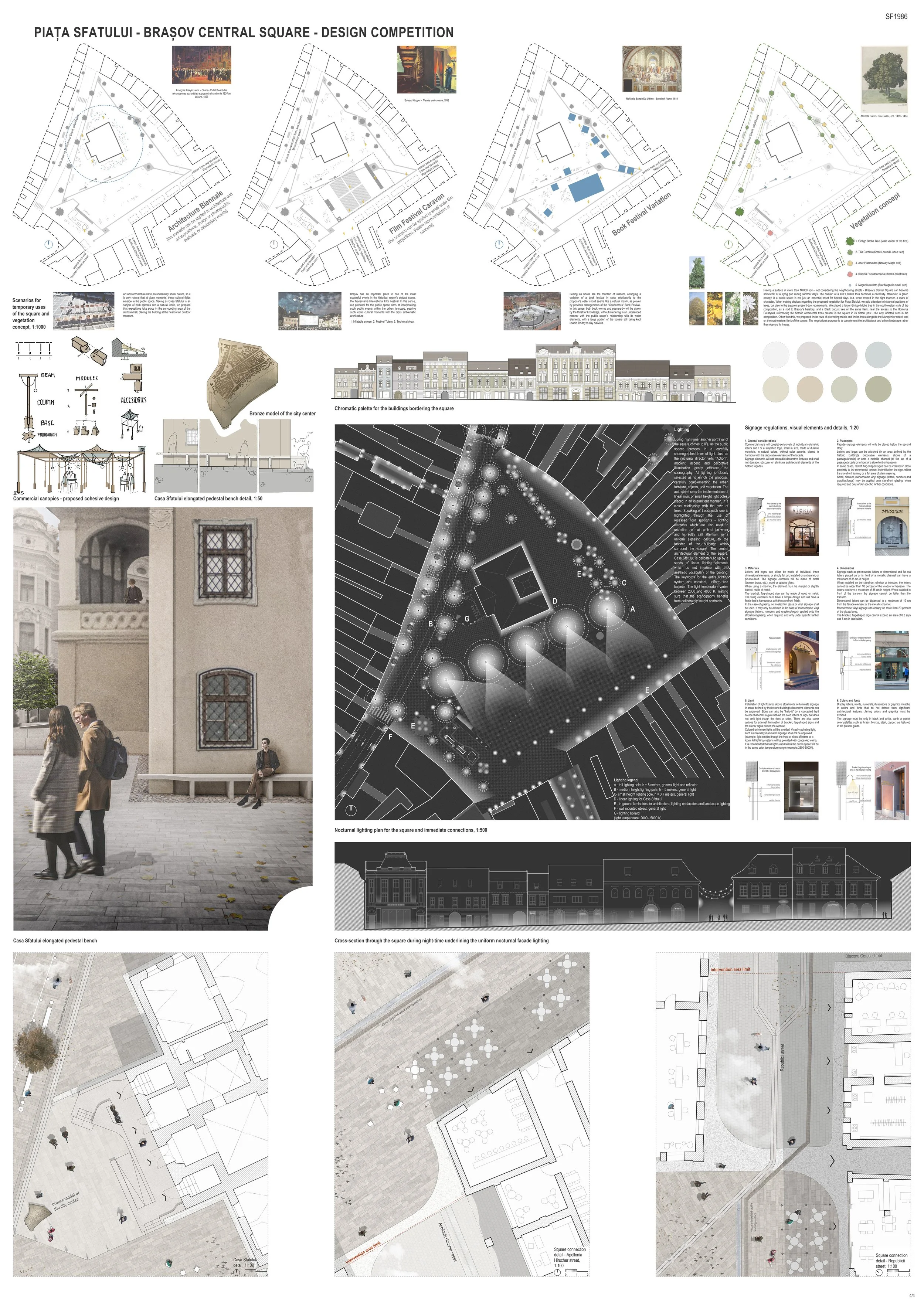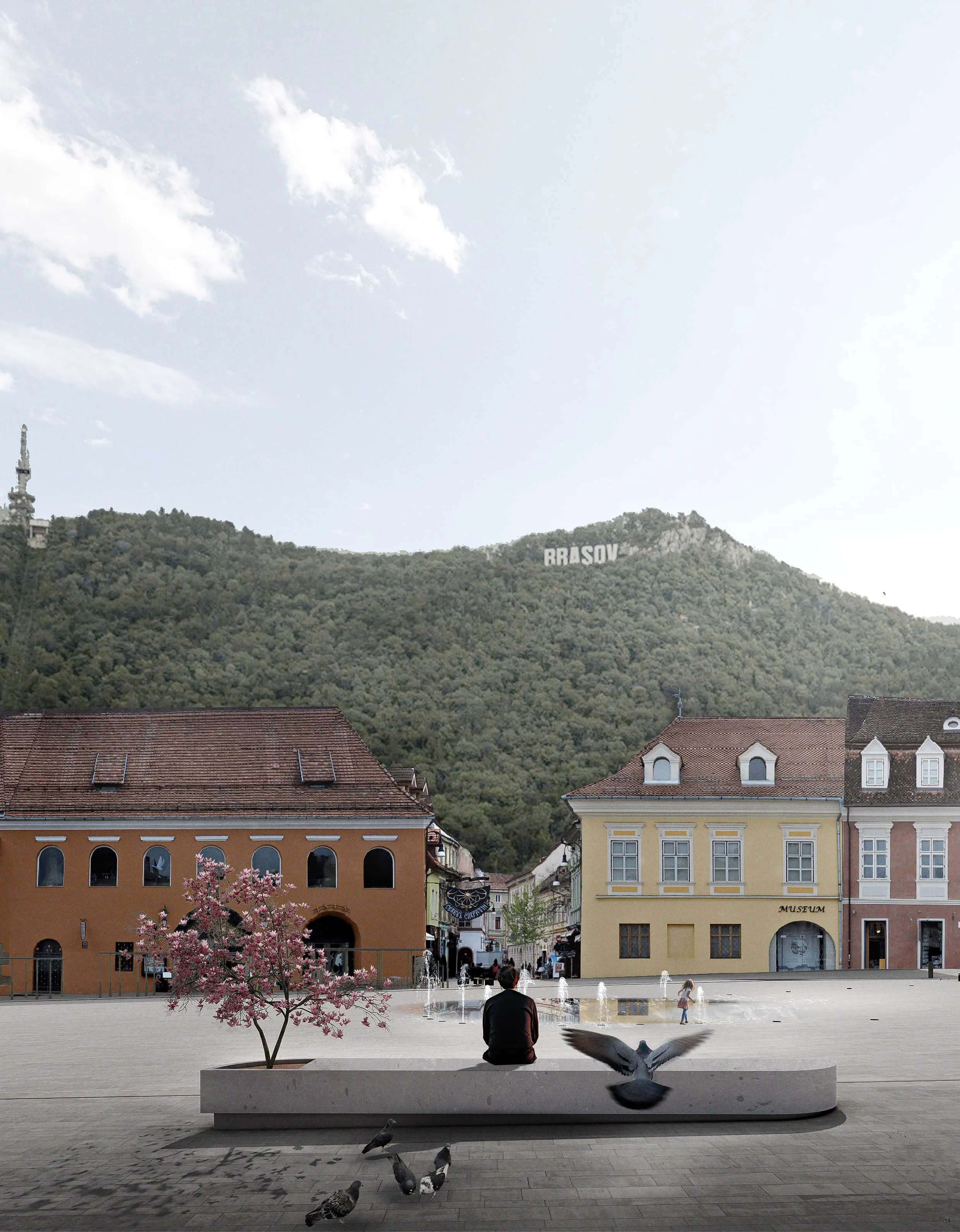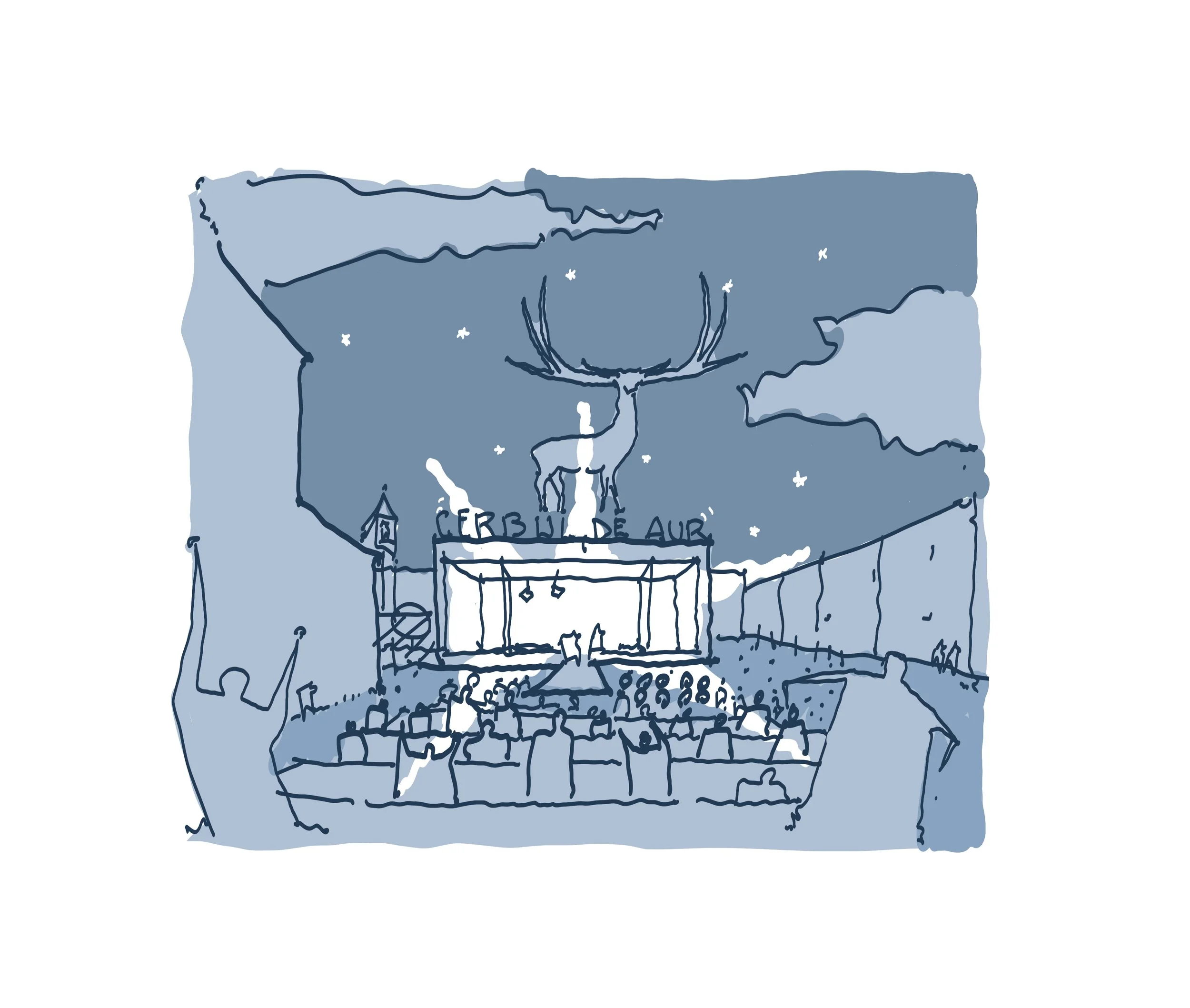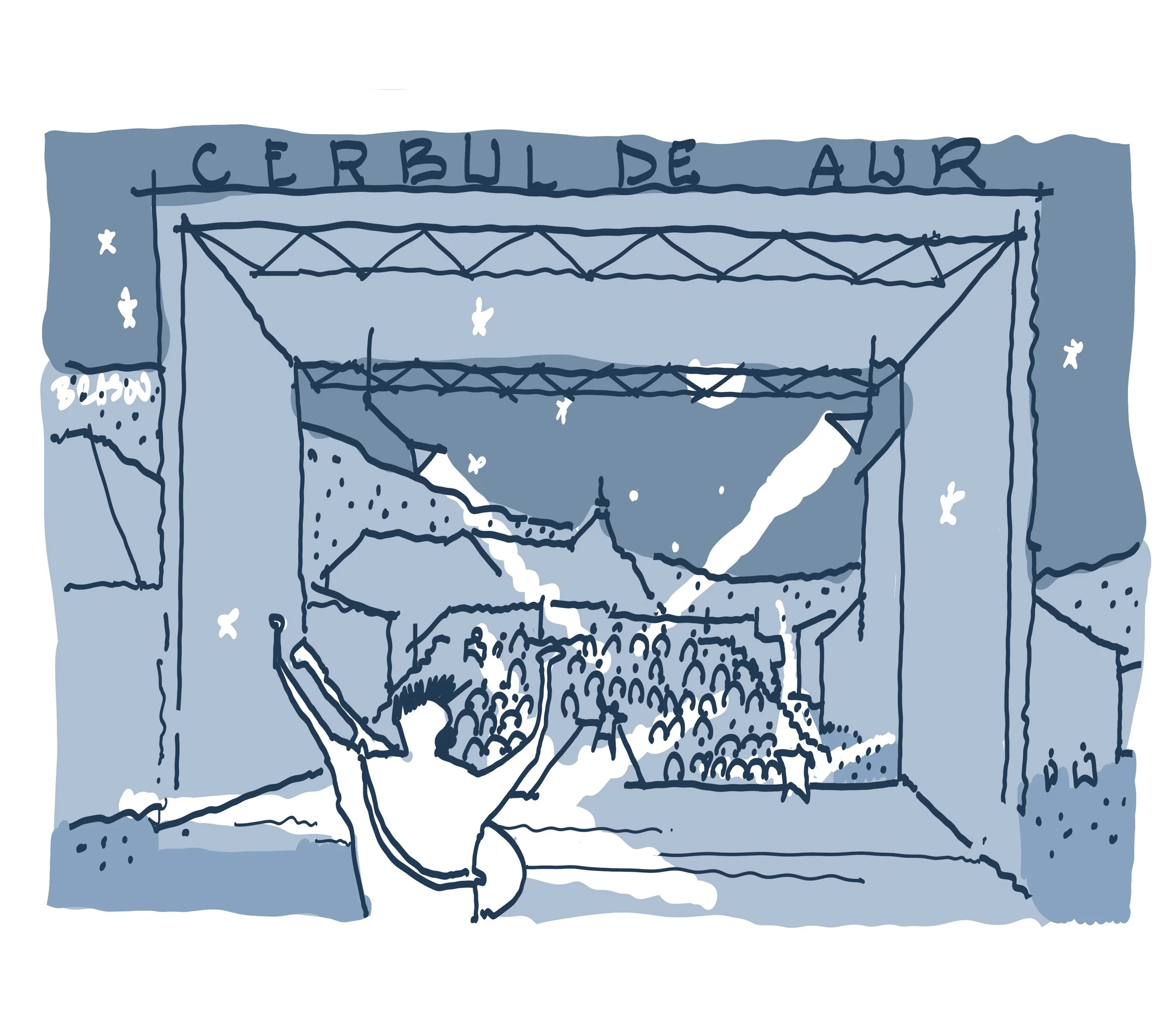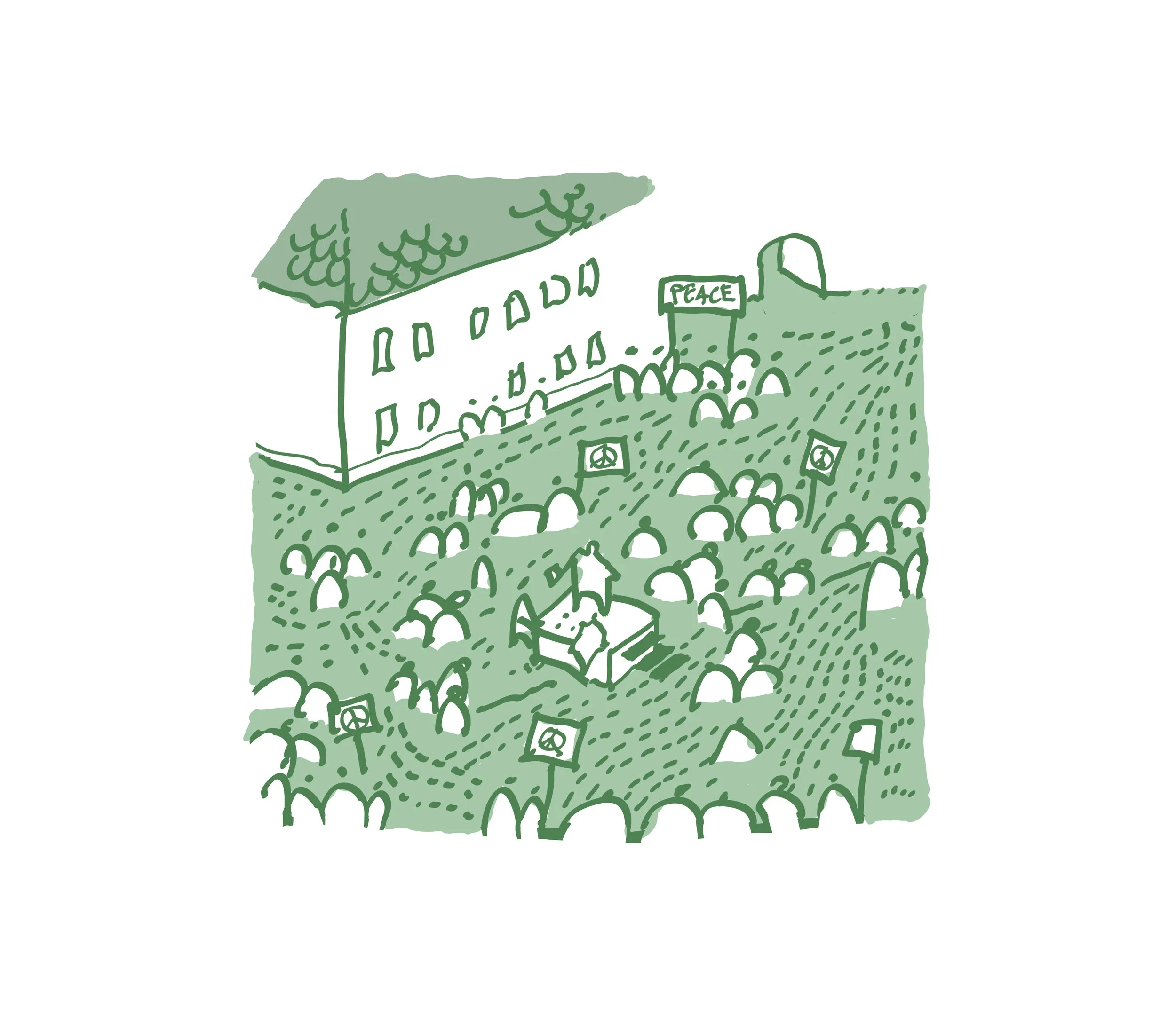Piața Sfatului Brașov Central Square Design Competition
Client: The Municipality of Brașov
Location: Brașov
Year: 2022
Project team: Alexandru Sabău, Adrian Bucin, Silviu Bors, Ioana Sabău, Patricia Simedru, Teodora Jinga
Status: competition entry, 10th place
One could easily make the case for Brașov to be considered the very center of Romania. On the geometric side of things, suppose a circle would be drawn around the country’s perimeter, the city would be just about in the middle of said circle. Be that as it may, we are speaking, of course, symbolically. It is by no geometry of chance that the idea of placing the capital in Brașov had a significant weight after the first world war. With a history spanning ages, being one of the most emblematic poles of Transylvanian culture, placed at the meeting point with several important historical lands of Romania, and one of the most important elements in the country’s Center Development Region, a surrounded by mountains Brașov cannot help but be semiotically charged. And what is at the core of a place with such significance, if not its historical center? And what is the very heart of Brașov’s complex cultural force, if not the Sfatului Square?
Going back and forth between speaking symbolically and literally, we can take a step back and look at the anatomical function of the heart - the motor of a living organism, which pumps blood trough blood vessels. By observing the public space as the center of a circulatory system, it is easy to picture the streets and the neighbouring landscape as arteries carrying oxygen and nutrients - or, in our case, sociocultural components and values from and towards the core. Even the surrounding natural environment becomes an accomplice to this metaphor, for, as the anatomical heart, the historic center of Brașov lies, constantly beating, between two resilient lungs - Tâmpa, and the Warthe Hill. As such, our strategy for the larger historical region of Brașov becomes one with rather medical inspirations, aiming at healing the sociocultural tissue from unnecessary objects and behaviours.
The complete project can be found on the competition’s website, here.





